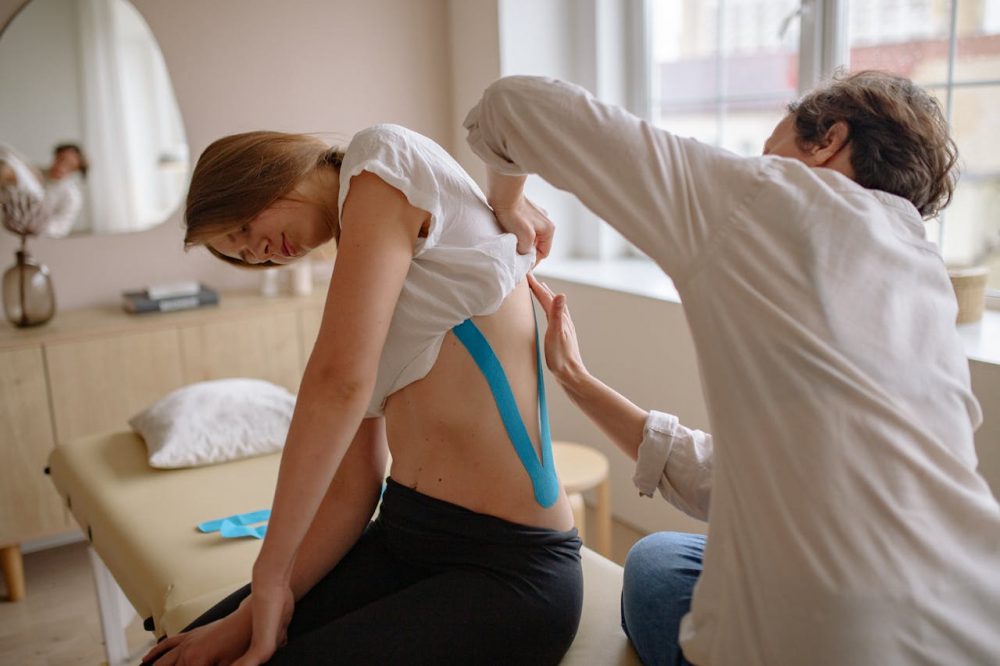Muscle cramps can appear at unexpected times during exercise, after extended runs, or even while you are relaxing. They can quite disturb your schedule, are unpleasant, and hurt. The favourable news? Sports massage might help prevent them. It’s not only about getting calm. Sports massage speeds up your body’s healing process, improves blood flow, and relaxes stiff muscles. Finding the appropriate approach and even looking for a good massage near me can make all the difference if you have been trying to lower cramping and enhance performance. However, you need more than just a fast rubdown to get the most from your sessions.
You have to approach it correctly. Whether you’re a gymgoer or a dedicated athlete, five efficient sports massage techniques help to maintain your muscles healthy, relaxed, and cramp-free.
Concentrate on Hydration Before And After A Massage
A frequent cause of muscle cramps is dehydration. Sports massage boosts blood flow, but to keep your muscles relaxed and balanced you need water. Before receiving massage therapy make sure to stay hydrated. This readies your muscles for deep tissue work and helps to remove toxins. Drink a lot of water once more after the massage. It helps you heal more quickly and refuel your body.
Around massage time, cut back on alcohol and caffeine. They might dry you off and nullify the advantages. Stay with electrolyte water. Though it may seem straightforward hydration is among the best ways to lower cramping risk.
Utilize Trigger Point Therapy for Tense Spots
Tight knots that frequently result in pain and cramps are trigger points. The targeted massage method known as trigger point therapy helps to loosen these tight spots. Though it could be unpleasant, the relief that follows is well worth the suffering. Concentrate on parts of your body where you usually cramp such as hamstrings, calves or shoulders. Frequent focus on these areas maintains muscle pliability. Between sessions, you can also use a foam roller or massage ball; simply use slow, steady pressure to the painful area. Frequent attention to trigger points reduces the likelihood of unexpected cramping during strenuous exercise.
Warm up MusclesUsing Delicate Massage Techniques
Your muscles are prepared for exercise or competition with light massage strokes. . Don’t go too deep, this is about warming not relaxing. Methods like effleurage (soft gliding) and tapotement (light tapping) improve flexibility and boost blood flow. This prepares the muscles for movement without shock lowers rigidity and helps to avoid mid-workout cramping. Give the major muscle groups five to ten minutes of your time. Concentrate on legs back or arms whichever area your sport places the most emphasis on. Massages help to warm you up and make your muscles more sensitive and less prone to spasm.
Stretch Right Away After a Massage
Massage opens your muscles. They are warm and more flexible right after the session. Stretching is ideal at this point. Static stretching where you hold a stretch for 20 to 30 seconds raises muscle length and equilibrium calms the nervous system, and lowers cramp risk. Concentrate on small places. Calves hamstrings, quads, and lower back should be stretched. Deep breathing and slow motion should be practised. Skipping this step is not an option; stretching after a massage extends the advantages for longer resets muscle memory, and stops tightness from returning.
Book Regular Sessions for Lasting Benefits
Even while a single massage is fantastic frequent appointments offer real long-lasting relief. Particularly if you train often or compete muscles need consistent care. Try to have a sports massage every two to four weeks. This helps your muscles to stay in check and stops ongoing tension. Any changes or fresh cramps should be reported to your therapist. They can change tactics to focus on problematic areas more precisely. Try shorter or focused massages on particular muscles if you cannot book sessions often. Thirty minutes can change things. Regular treatment helps stop cramps before they begin and keeps your body in top form.
Integrate Lifestyle Adjustments with Massage
Massage alone wont stop all cramping. Together with good habits, it functions best. Steer clear of overtraining; remain hydrated; consume magnesium and potassium-rich meals. Enough rest will aid muscle recovery. One component of a larger strategy should be massage. These actions taken together provide great protection against cramping. You’ll feel better move better and train more intelligently..
Conclusion
Preventing muscle cramps requires a strong instrument: sports massage. With the right methods and a regular schedule you can maintain your muscles relaxed fit and action-ready. Drink water treat trigger points stretch, and warm up your muscles. These little acts have a great impact.



